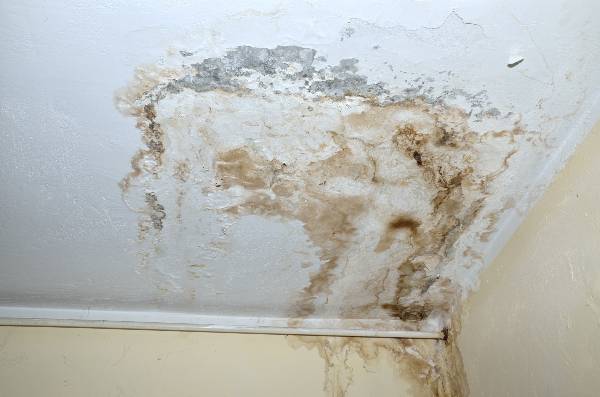Just about everyone is bound to have their private theory involving Detecting hidden plumbing leaks.

Early detection of dripping water lines can minimize a potential catastrophe. Some small water leakages might not be noticeable.
1. Check Out the Water Meter
Checking it is a guaranteed means that assists you uncover leaks. If it moves, that indicates a fast-moving leakage. This indicates you might have a slow leak that can also be below ground.
2. Examine Water Consumption
If you detect unexpected changes, in spite of your intake being the very same, it indicates that you have leaks in your plumbing system. A sudden spike in your costs shows a fast-moving leakage.
A consistent increase every month, even with the very same habits, shows you have a slow-moving leakage that's likewise gradually rising. Call a plumber to thoroughly examine your residential property, especially if you feel a warm area on your flooring with piping beneath.
3. Do a Food Coloring Examination
30% comes from bathrooms when it comes to water usage. Examination to see if they are running correctly. Decrease flecks of food shade in the container as well as wait 10 mins. There's a leakage in between the container and also bowl if the color in some way infiltrates your dish throughout that time without flushing.
4. Asses Outside Lines
Don't neglect to examine your exterior water lines too. Test faucets by affixing a yard hose. Should water leak out of the connection, you have a loose rubber gasket. Replace this and also guarantee all connections are limited. It will assist obtain it expertly took a look at as well as maintained yearly if you have actually obtained a lawn sprinkler system. One tiny leak can waste lots of water and spike your water expense.
5. Assess the situation and inspect
Property owners must make it a habit to check under the sink counters and also also inside cupboards for any bad odor or mold and mildew growth. These 2 warnings indicate a leakage so punctual attention is required. Doing regular evaluations, even bi-annually, can save you from a major issue.
Check for discolorations as well as damaging as most devices and pipes have a life expectations. If you believe leaking water lines in your plumbing system, don't wait for it to intensify.
Early discovery of dripping water lines can minimize a possible calamity. Some little water leakages might not be noticeable. Inspecting it is a proven means that helps you find leaks. One small leakage can waste bunches of water and increase your water costs.
If you suspect leaking water lines in your plumbing system, don't wait for it to escalate.
The Dangers of Undetected Water Leaks
Mold
One of the most common results of undetected water leaks in your home is mold. Under the right conditions, mold can begin to grow and spread in just a day or two.
Moisture from water leaks combined with humidity and lack of ventilation allow mold spores to germinate and start spreading.
And while household mold doesn’t carry the same health risks as substances like asbestos, they can cause allergic reactions in people sensitive to them or with asthma.
Structural Damage
When water leaks occur in places we can’t see — above the ceiling, behind walls or beneath floors — they often have time to do some serious damage before making themselves known.
You might notice cracks or bubbles appear in your walls or a slow drip or water from the ceiling.
These are signs of water leaks and buildups in the structure of your home. If you don’t jump on these problems soon enough, the wood frame that supports your house could start rotting, leading to costly repairs and increasing the risk of disasters like ceiling or wall collapses.
Water Waste
According to the Alliance for Water Efficiency, the average home can lose anywhere from 2,000 to 20,000 gallons of water per year due to leaks.
High numbers like that might make you imagine a burst pipe spewing out water. But believe it or not, even a small, constant drip from a kitchen sink could add up to over a thousand gallons of wasted water in a single year.
And if you live in a place where you pay for every gallon of water you use, that adds up to a lot of dollars down the drain. So we understand leaks are bad. Let’s take a look at some of the common (and not-so- common) water leaks you might find around your home.
Flush Valve Flapper
The flush valve flapper is a rubber flap that sits above the flush valve at the bottom of the tank. It’s attached to the flusher with a chain. Over time, it can get worn out and lose its seal, causing an endless flow of water into the toilet bowl.
These leaks are hard to detect since they’re usually silent, but there’s a little insider trick you can use with just a little dye or food coloring:
Put a few drops in the toilet tank. Check the water in your toilet bowl 15 minutes later. If any of the color made it into the toilet bowl, you’ll know what the culprit is.
Fill Valve
The fill valve is what replenishes your toilet’s tank water after you flush. If you’ve ever looked inside your toilet tank and seen water gushing out of an upright plastic valve, that’s a faulty fill valve.
https://meetflo.com/blogs/flo/how-to-find-and-repair-water-leaks-a-comprehensive-guide

As an enthusiastic reader on Finding hidden leaks, I assumed sharing that piece of content was a smart idea. Enjoyed reading our content? Please share it. Help others locate it. I appreciate reading our article about Detecting hidden plumbing leaks.
Comments on “Guide To Water Leakage Discovery In Your Home”